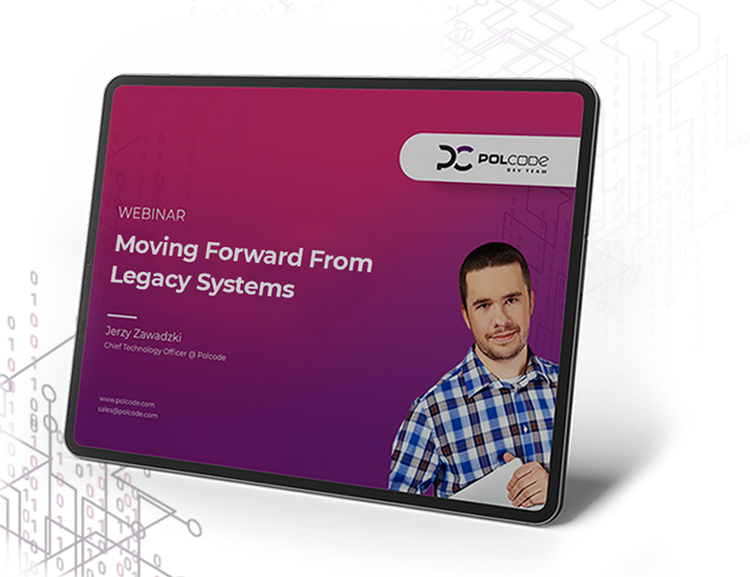
You’ve probably heard the phrase, “if it ain’t broke, don’t fix it”. But when it comes to legacy code, this mindset can quietly drain your resources and stall innovation. Code that once worked perfectly may now be holding your entire system and your business back.
In this post, we’ll explore why code refactoring is one of the smartest modernization moves you can make. Done right, it reduces technical debt, boosts performance, and lays the foundation for future growth.

Refactor to Evolve: How Cleaning Up Code Reduces Tech Debt and Boosts Performance
You’ve probably heard the phrase, “if it ain’t broke, don’t fix it”. But when it comes to legacy code, this mindset can quietly drain your resources and stall innovation. Code that once worked perfectly may now be holding your entire system and your business back.
In this post, we’ll explore why code refactoring is one of the smartest modernization moves you can make. Done right, it reduces technical debt, boosts performance, and lays the foundation for future growth.
Table of Contents
Introduction
What Is Refactoring (vs. Rewriting?)
When to Refactor: Key Warning Signs
How Refactoring Works
Reducing Tech Debt Through Refactoring
Case Study: Velocity Motoring
Measuring ROI: Metrics That Matter
AI and Human Expertise in Refactoring
Refactoring in Agile Sprints
Hidden Benefits of Clean Code
Quick Wins with Polcode’s Audit Model
Start Small: Proof of Concept
Workshop or Engagement
Why Act Now
Let’s Build Software That Lasts
What Is Refactoring (And How Does It Differ from Rewriting?)
Refactoring is the process of improving the internal structure of existing code without changing how it behaves externally. It’s like spring cleaning for your application: nothing is thrown out, but everything is more functional and easier to manage.
Unlike rewriting, which often comes with significant risk and cost, refactoring helps you evolve your code incrementally, with fewer disruptions and more predictability.
As explained in Chapter 13 of our ebook, "Legacy Software Modernization – a Guide for Enterprises", refactoring allows you to:
Reduce complexity and improve maintainability
Make your system easier to scale
Speed up development
Prevent bugs before they happen
"Legacy code is like an old house—you can still live in it, but fixing the wiring makes everything run smoother."
Warning Signs Your Codebase Needs Refactoring
Not sure whether you need to refactor? Here are the telltale signs:
Developers are afraid to make changes
Every update introduces new bugs
Your system has become painfully slow
The code is poorly documented or inconsistent
Adding new features feels like building on a shaky foundation
If these sound familiar, it’s time to look under the hood.
• How to Make Your Codebase Maintainable and Robust for Years to Come
• Overcoming the Challenges of Legacy Code in Enterprise Retail
What Does a Successful Refactoring Process Look Like?
Start with a Technical Audit
At Polcode, we never jump in blindly. Our technical audit identifies problem areas across architecture, CI/CD, environments, documentation, and test coverage.
Build a Modernization Roadmap
We then translate audit findings into a phased modernization roadmap tailored to your business goals, timelines, and risk appetite. Every improvement has a purpose, and nothing disrupts your current operations.
Our Refactoring Framework
Here’s how we clean up code:
Isolate problem modules
Remove outdated dependencies
Improve naming conventions and structure
Add test coverage for future-proofing
How Refactoring Reduces Tech Debt
Continuous refactoring acts like preventive maintenance. It ensures that your codebase stays lean, safe, and scalable, so tech debt doesn’t balloon out of control. (Chapter 16 of our ebook dives deeper.)
Ready to modernize smarter?
Case Study: Velocity Motoring - Refactoring Without Disruption
One of the best examples of step-by-step refactoring in action is our long-term collaboration with Velocity Motoring. Over 5 years, we helped them migrate from Symfony 1.0.9 to Symfony 5.4—while keeping their critical operations running.
By introducing modern tools (Composer, PHPUnit, Pimple), gradually porting features, and improving warehouse workflows, we ensured both continuity and performance gains.
The project shows how even deep legacy systems can evolve with careful planning and iterative refactoring.
Read the full Velocity Motoring Case Study.
Justifying the Investment: Metrics That Matter
Refactoring is a strategic investment. But how do you show ROI?
Track these key KPIs:
Deployment speed
Bug count and recurrence
New developer onboarding time
Unit and integration test coverage
These metrics demonstrate real, measurable progress and support your case to internal stakeholders.
Can AI Help? Yes, With Human Guidance
AI tools like GitHub Copilot and SonarQube can assist with suggestions, refactoring patterns, and static analysis. But they’re not magic wands.
At Polcode, we combine AI-assisted tools with expert oversight:
Use Copilot for scaffolding or documentation
Run static analysis tools for early bug detection
Let senior engineers lead the architecture and review
AI boosts productivity, but real value comes from human-led modernization.
Embedding Refactoring into Agile Sprints
You don’t need a big-bang rewrite. Instead:
Reserve 10–20% of sprint velocity for tech debt reduction
Plan small, manageable refactoring tasks
Treat code cleanup as a habit, not a project
This way, your team continuously improves the codebase without delaying new features.
The Hidden Wins of Refactoring: Secure Systems, Happier Devs, Faster Releases
Clean code doesn’t just perform better. It also:
Reduces vulnerabilities and improves security posture
Enhances team morale by eliminating messy, frustrating code
Improves scalability, stability, and user experience
Your developers will thank you. So will your customers.
Quick Wins from the Start: Polcode’s Technical Audit Model
Our audit isn’t just technical—it’s business-aligned. Here’s what it covers:
Architecture evaluation
CI/CD and local environment optimization
Documentation review
Test coverage and risk mapping
Outcomes? A clear modernization plan, faster onboarding, and measurable improvements in the first 30 days.
Proof of Concept: Start Small, Move Fast
Want to test the waters before committing to a full engagement?
✅ PoC packages start at $1.5K, with quick wins in ~30 days.
✅ Evaluate benefits, align goals, and make a data-informed decision.
It’s a low-risk way to validate the case for code modernization.
Workshop vs. Engagement: What’s the Difference?
Workshop = free strategic audit
10 hours with a Solution Architect
Audit, planning, and prioritization
Engagement = hands-on execution
Phased refactoring, optimization, and integration
Choose the path that fits your business needs and readiness.
Why Now?
Waiting only makes things worse:
Tech debt compounds
Development slows down
Bugs, instability, and security risks increase
Chapter 15 of our ebook lays it out clearly: fixing these issues early saves both time and money. It’s not just about improving code. It’s about empowering your team to build better software.
Ready to Refactor? Start the Conversation
Let’s make your code work for you, not against you.
Contact us to schedule a free consultation
Or download the full ebook for more legacy modernization insights
Modernize Smarter with Polcode
With over 100 successful modernization projects, we help businesses build better, scalable systems through:
Code Refactoring
Security Audits & Improvements
Performance Optimization
API & System Integrations
Automated Testing
Cloud Migration
Let’s build software that lasts.
On-demand webinar: Moving Forward From Legacy Systems
Want to end legacy codebase misery and learn how to reignite your old IT system? Watch our on-demand webinar hosted by our CTO - Jerzy Zawadzki.

Latest Blog Posts
Start Refactoring Smarter in 4 Simple Steps
Book a Free Audit
Meet with us to review your codebase and pinpoint critical areas for improvement.
Get a Modernization Roadmap
Receive a clear, phased plan aligned with your business goals and timelines.
Implement Incremental Refactoring
We clean up, optimize, and future-proof your system without disrupting current operations.
Measure the Results
Track performance, stability, and team efficiency with clear before-and-after metrics.

